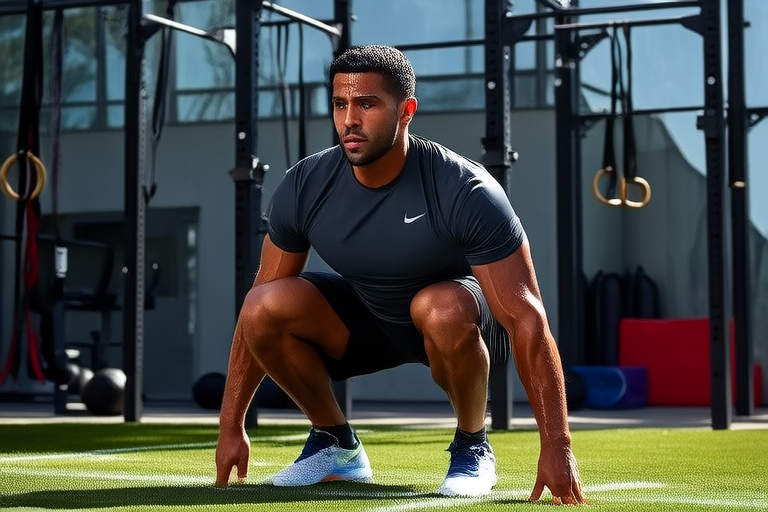Boosting Performance: Sports Science Insights and Essential Precautions
1. Introduction to Sports Science and Its Role in Enhancing Athletic Performance
Sports science is an interdisciplinary field that combines knowledge from various disciplines such as physiology, psychology, biomechanics, and nutrition to optimize athletic performance. It provides athletes with evidence-based strategies to improve their physical capabilities, enhance their mental resilience, and reduce the risk of injury. By understanding the physiological adaptations that occur during exercise and the psychological factors influencing performance, sports scientists can design personalized training programs that cater to individual needs.
The role of sports science in enhancing athletic performance cannot be overstated. Through rigorous research and practical application, sports scientists have developed innovative training techniques, nutritional strategies, and recovery methods that push the boundaries of human potential. Whether it’s improving endurance, increasing strength, or refining technical skills, sports science offers valuable insights that can make the difference between winning and losing.
2. Key Insights from Sports Science
Nutrition
Proper nutrition is fundamental to athletic performance. Carbohydrates, proteins, fats, vitamins, and minerals all play crucial roles in fueling workouts, repairing tissues, and supporting overall health. Athletes need to consume adequate amounts of carbohydrates to maintain energy levels during prolonged activities. Protein intake is essential for muscle repair and growth, especially after intense training sessions. Healthy fats provide a source of sustained energy and support hormone production.
Hydration is another critical aspect of nutrition. Dehydration can impair performance by reducing blood volume, increasing heart rate, and decreasing sweat rate. Athletes should aim to drink enough fluids before, during, and after exercise to maintain optimal hydration levels. Electrolyte replacement may also be necessary for activities lasting longer than one hour.
Training Techniques
Effective training techniques are tailored to the specific demands of each sport and individual athlete. Strength training improves power output, enhances muscle mass, and reduces the risk of injury. Plyometric exercises, which involve explosive movements like jumping and bounding, help develop speed, agility, and coordination. Endurance training increases cardiovascular fitness and improves oxygen utilization, which is particularly important for long-distance events.
Periodization is a widely used approach to structuring training programs. It involves dividing the training year into phases, each with different goals and intensities. This method allows athletes to peak at the right time for competitions and avoid burnout. Recovery periods are incorporated into periodized plans to allow muscles to repair and adapt to the stress of training.
Recovery Methods
Recovery is just as important as training itself. Active recovery, such as light jogging or cycling, helps flush out metabolic waste products and promotes blood flow to the muscles. Passive recovery techniques, like stretching, foam rolling, and massage, can alleviate muscle tightness and soreness. Sleep is often overlooked but is vital for recovery. During sleep, the body repairs damaged tissues, consolidates memories, and regulates hormones.
Cryotherapy and compression garments are popular recovery tools. Cryotherapy involves exposing the body to extremely cold temperatures to reduce inflammation and promote healing. Compression garments apply pressure to the limbs, which can improve circulation and reduce swelling. However, these methods should be used judiciously and under professional guidance.
Mental Preparation Strategies
Athletic performance is influenced by psychological factors such as motivation, confidence, and focus. Mental preparation strategies, such as visualization and goal setting, can enhance performance by fostering a positive mindset. Visualization involves mentally rehearsing specific actions or scenarios, which can improve motor skills and reduce anxiety. Goal setting helps athletes stay focused and motivated by providing clear targets to work towards.
Mindfulness and meditation are increasingly recognized for their benefits in sports. These practices can improve concentration, regulate emotions, and enhance overall well-being. By cultivating a calm and centered state of mind, athletes can perform better under pressure and recover more quickly from setbacks.
3. Essential Precautions Athletes Should Take to Prevent Injuries and Ensure Long-Term Health
Injuries are a common challenge faced by athletes at all levels. Proper warm-up and cool-down routines are essential for preparing the body for activity and promoting recovery. Warm-ups should include dynamic stretches and light aerobic exercise to increase blood flow and raise core temperature. Cool-downs should focus on static stretching to improve flexibility and reduce muscle tension.
Strength training plays a crucial role in injury prevention. Strong muscles, tendons, and ligaments provide better support to joints, reducing the risk of sprains and strains. Balance and stability exercises can also enhance proprioception, which is the ability to sense the position and movement of the body. This improved awareness helps athletes react more effectively to changes in their environment, thereby preventing falls and other accidents.
Listening to the body is paramount. Athletes should be aware of any unusual pain or discomfort and seek medical attention if necessary. Overtraining can lead to fatigue, decreased performance, and increased susceptibility to injury. Monitoring training intensity and volume, along with tracking recovery metrics, can help identify signs of overtraining and guide adjustments to the training program.
Proper equipment is another key factor in injury prevention. Wearing appropriate footwear and protective gear can significantly reduce the risk of injuries. Regular maintenance and replacement of equipment are essential to ensure its effectiveness. Additionally, athletes should familiarize themselves with the rules and regulations of their sport to minimize the risk of collisions and other dangerous situations.
4. Conclusion: The Importance of Integrating Sports Science Principles for Optimal Performance While Maintaining Safety
The integration of sports science principles is essential for optimizing athletic performance while ensuring the long-term health and safety of athletes. By leveraging the latest research and evidence-based practices, athletes can enhance their physical capabilities, improve their mental resilience, and reduce the risk of injury. Nutrition, training techniques, recovery methods, and mental preparation strategies all contribute to a holistic approach to athletic development.
However, it is crucial to strike a balance between pushing boundaries and safeguarding health. Athletes must be mindful of the risks associated with overtraining and neglecting proper recovery. By adhering to evidence-based guidelines and seeking professional advice when needed, athletes can achieve their full potential while minimizing the chances of long-term damage.
In conclusion, the principles of sports science offer a wealth of opportunities for athletes to excel in their respective fields. By embracing these insights and taking the necessary precautions, athletes can enjoy a rewarding and sustainable career in sports.










